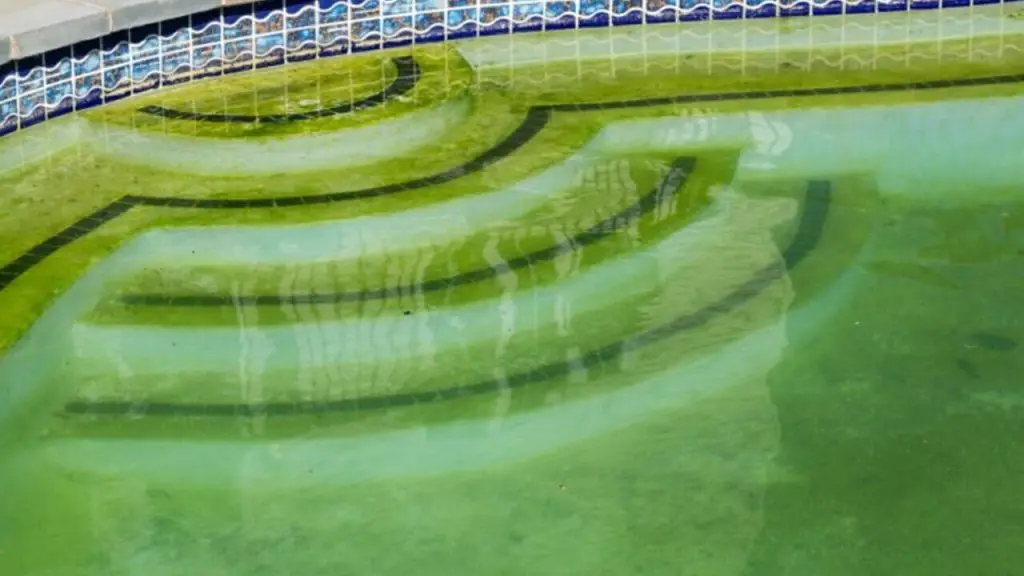Algae growth is a common problem in saltwater pools that can have a significant impact on pool health and maintenance.
Algae can cause a range of issues, including poor water quality, reduced circulation, increased maintenance costs, and even risks to swimmers’ health.
Understanding the different types of algae that can grow in saltwater pools and their effects on the pool is essential for maintaining a safe and healthy swimming environment.
In this article, we’ll explore the different types of algae that can grow in saltwater pools, their effects on pool health and maintenance, and the steps you can take to prevent and treat algae growth.
Whether you’re a new or experienced saltwater pool owner, this article will provide you with the knowledge and tools you need to keep your pool clean, clear, and healthy.
Types of Algae Found in Saltwater Pools
Green Algae
Green algae are the most common type of algae found in saltwater pools. They are easy to spot as they appear as green, slimy patches on pool walls and floors.
Green algae grow rapidly in warm temperatures and bright sunlight, making them more common during the summer months. They can cause cloudy pool water and give the pool a greenish tint.
In severe cases, green algae can clog the pool’s filtration system, leading to increased maintenance costs and reduced water quality.
Black Algae
Black algae are less common than green algae, but they are more challenging to remove. They appear as black or dark green spots on pool walls and floors, and they have a hard, slimy texture.
Black algae are often mistaken for dirt or grime, but they are living organisms that can grow deep into the pool’s surfaces.
They are extremely resistant to chlorine and other chemicals, making them difficult to remove. Black algae can also cause skin irritation and pose a risk to swimmers’ health.
Mustard/Yellow Algae
Mustard or yellow algae are less common than green or black algae, but they are still a problem in saltwater pools.
They appear as yellow or brown spots on pool walls and floors and can have a slimy or powdery texture. Mustard algae can grow quickly in low-chlorine environments, and they can be resistant to shock treatments.
They can cause a chlorine-like odor in the pool and make the pool surfaces slippery and unsafe for swimmers.
Effects of Algae on Saltwater Pool Health

Reduced Water Quality
Algae growth in saltwater pools can cause a reduction in water quality. Algae consume nutrients in the pool water, leading to imbalances in pH levels and increased chlorine demands.
This can make the water cloudy, murky, and uninviting, leading to reduced pool usage.
Increased Maintenance Costs
Algae growth in saltwater pools can also increase maintenance costs. Algae can clog the pool’s filtration system and reduce water flow, leading to increased energy costs and filter maintenance.
Algae can also lead to the need for additional chemicals and cleaning supplies, increasing the overall maintenance cost.
Risks to Swimmers’ Health
Algae growth in saltwater pools can pose a risk to swimmers’ health. Algae can cause skin and eye irritation, leading to rashes, redness, and inflammation.
Algae can also harbor bacteria and other pathogens that can cause infections and illnesses, especially in people with weakened immune systems.
Dealing with Stubborn Algae Growth
Despite regular maintenance and preventative measures, some pool owners may still experience stubborn algae growth in their saltwater pools. In such cases, it’s essential to take swift action to eliminate the problem before it worsens.
There are several steps that you can take to deal with stubborn algae growth in your saltwater pool:
- Shock the Pool: The first step in treating stubborn algae growth is to shock the pool. Shocking the pool involves adding a large dose of chlorine to the water, which kills the algae and other bacteria in the pool. Follow the manufacturer’s instructions carefully when shocking the pool, and avoid swimming in the water until the chlorine levels have returned to normal.
- Brush and Vacuum the Pool: Brush and vacuum the pool to remove any dead algae and other debris from the water. Use a pool brush to scrub the walls, floor, and other surfaces of the pool, paying special attention to areas where algae are present. Vacuum the pool using a pool vacuum or automatic pool cleaner to remove any debris.
- Backwash the Filter: Backwash the filter to remove any dead algae and other debris from the pool’s filtration system. Follow the manufacturer’s instructions carefully when backwashing the filter, and be sure to rinse the filter thoroughly afterward.
- Retest and Adjust the Water Chemistry: After treating the pool for stubborn algae growth, retest the water chemistry and adjust the pH, alkalinity, and chlorine levels as needed. Continue to monitor the water chemistry regularly and adjust as needed to prevent further algae growth.
By taking these steps and following proper pool maintenance and cleaning practices, you can eliminate stubborn algae growth and maintain a clean, clear, and healthy saltwater pool.
Prevention and Treatment of Algae Growth in Saltwater Pools
Regular Pool Maintenance and Cleaning Practices
The best way to prevent algae growth in saltwater pools is through regular pool maintenance and cleaning practices.
This includes testing the pool’s water chemistry regularly, cleaning the pool surfaces and equipment, and maintaining the pool’s filtration system.
Proper pool maintenance practices can help keep the pool water clean and balanced, preventing algae growth.
Proper Water Chemistry Balance and Use of Algaecides
Maintaining proper water chemistry balance is crucial for preventing algae growth in saltwater pools. The pool’s pH, alkalinity, and chlorine levels should be regularly tested and adjusted as needed to keep the water balanced.
Algaecides can also be used to prevent algae growth in saltwater pools. Algaecides are chemicals that kill and prevent the growth of algae in the pool water.
There are several types of algaecides available, including copper-based, silver-based, and polymer-based algaecides.
It is important to follow the manufacturer’s instructions carefully when using algaecides to avoid overuse, which can lead to chemical imbalances and other problems.
Importance of Identifying and Treating Algae Promptly
Identifying and treating algae promptly is essential for preventing its spread and minimizing its effects on pool health and maintenance.
Regular pool maintenance and cleaning practices can help detect algae growth early before it becomes a significant problem.
Once algae are detected, they should be treated immediately using the appropriate algaecide and cleaning methods.
Failure to treat algae promptly can lead to increased maintenance costs, reduced water quality, and risks to swimmers’ health.
Conclusion
Algae growth in saltwater pools is a common problem that can lead to a host of issues, including reduced water quality, increased maintenance costs, and risks to swimmers’ health.
Understanding the different types of algae and their effects on pool health and maintenance is essential for maintaining a safe and healthy swimming environment.
Regular pool maintenance and cleaning practices, proper water chemistry balance, and the use of algaecides can help prevent algae growth in saltwater pools. Identifying and treating algae promptly is also critical for minimizing its effects on pool health and maintenance.
By following these guidelines, saltwater pool owners can enjoy a safe and healthy swimming environment all season long.
Additional Posts
